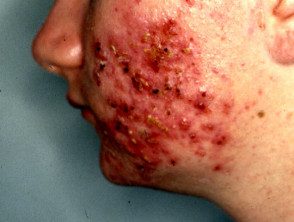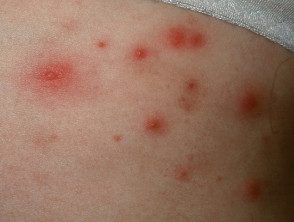What is gram-negative folliculitis?
Gram-negative folliculitis is an acne-like disorder caused by a bacterial infection. Gram-negative bacteria They include Escherichia coli, Pseudomonas aeruginosa, Serratia marcescens, Klebsiella, and Proteus species.
The term "Gram negative" refers to the staining pattern of the organisms at the laboratory. Certain bacteria do not absorb a stain known as a "Gram."
Gram-negative folliculitis can result from long-term treatment of acne with tetracycline or current antibiotics
Other skin conditions due to gram-negative bacteria include:
-
Folliculitis in the spa pool, which is due to Pseudomonas infection. Is organism can withstand high temperatures, increased alkalinity and the high organic content of a hot pool
- Folliculitis due to Aeromonas hydrophila, arising within an area of skin lesions exposed to contaminated fresh water.
What does gram-negative folliculitis look like?
Gram-negative folliculitis is a pustular eruption Acne-like It is often mistaken for worsening acne as it generally occurs in patients with existing acne.
In approximately 80% of patients, gram-negative folliculitis causes superficial pustules with relatively few papules and comedones. These injuries are generally caused by species of Klebsiella, Escherichia and Serratia.
In approximately 20% of patients with gram-negative folliculitis, the lesions are deep, nodular and cyst-I like it. These are caused by Proteus species, which can deeply invade the skin and create pus-filled abscesses and cysts.
Gram-negative folliculitis lesions are generally found around the area of the upper lip under the nose, down to the chin and cheeks.
Gram negative bacteria folliculitis

Gram-negative folliculitis

Folliculitis in spa pools
How is the diagnosis of gram-negative folliculitis made?
The poor response of a pustular rash to standard anti-acne antibiotics can lead to the suspicion that an unusual organism may be present. The diagnosis of gram-negative folliculitis is made by microscopy / / cytology. The bacteria appear red or pink with Gram stain.
Bacterial culture Identify which species is responsible for the infection. Bacteria undergo antibiotic sensitivity tests, as this differs between them.
What is the treatment for gram-negative folliculitis?
Gram-negative folliculitis usually clears up quickly with:
-
Antibiotics to which the organisms are sensitive (for example, ampicillin, trimethoprim)
-
Isotretinoin, which appears to act by suppressing tallow production and drying of mucous membranes, especially the nasal mucous membranes, which is where the causal bacteria are found
Folliculitis in the spa pool usually goes away in a few days without treatment.

